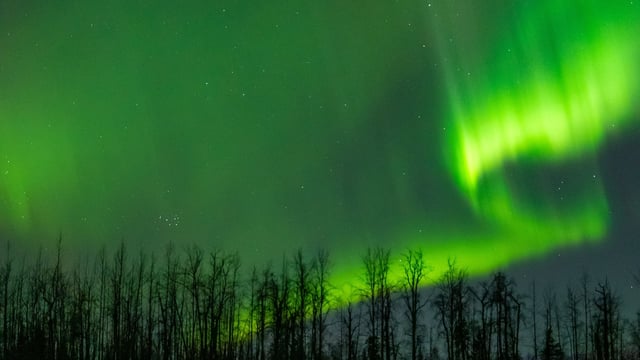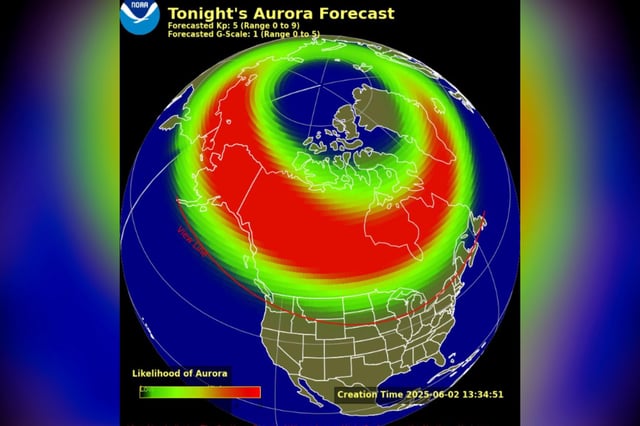Overview
- A coronal mass ejection from the Sun unleashed a geomagnetic storm on June 1 that produced aurora borealis displays across multiple U.S. states.
- Sunday and Monday nights saw the Northern Lights visible in states along the Canadian border—Alaska, Washington, Montana, North Dakota, Minnesota, Wisconsin and Michigan—and as far south as Illinois and Iowa.
- NOAA forecasts that auroral activity will continue into Tuesday night but expects reduced visibility in the continental U.S., with Alaska remaining the prime viewing location.
- The current solar maximum is driving more frequent and intense geomagnetic storms, with heightened auroral potential projected through 2025 and 2026.
- Geomagnetic disturbances can disrupt high-frequency radio, air traffic control and satellite communications, and optimal viewing requires dark skies, clear weather and timing between 10 p.m. and 2 a.m. local time.



